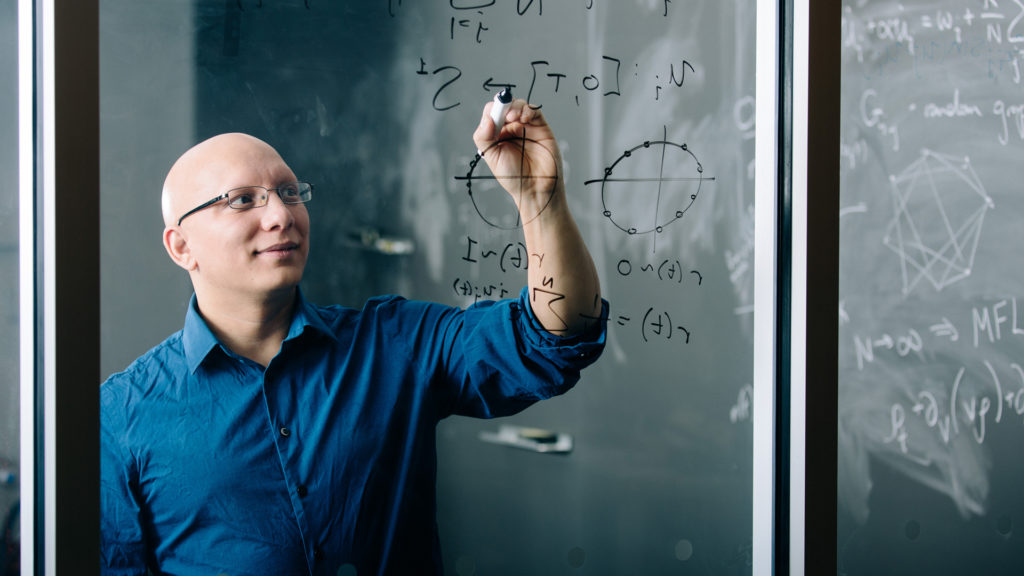
Matthew Mizuhara wants to talk about fireflies. Not the ones that flicker in New Jersey, but a species found in the forests of Thailand. During mating season, these insects stop flashing as individuals — here and there and anytime — and align all their internal light switches, beaming collective bursts into the darkness.
There is something poetic about the phenomenon, but Mizuhara, a math professor, is studying the fireflies not with words, but numbers; this mystery is a mathematical one.
The spontaneous synchronization striking these fireflies is found elsewhere too: pendulums fall into the same rhythmic swing; an audience calls for an ovation and its applause somehow turns into a single, steady clap; thousands of cells in your heart’s natural pacemaker mimic one another and fire all at once.
With a colleague at Drexel University, Mizuhara is applying the Kuramoto model — a collection of math equations that describe how order emerges from chaos — to fireflies in hopes of understanding what factors matter most in determining synchronization.
The answers could help scientists learn to predict patterns that prevent synchronization in instances where the outcome isn’t positive, such as with visual hallucinations caused when neurons inappropriately coordinate and fire together.
Whether studying fireflies or finding the next foothold while rock climbing in North Jersey, Mizuhara uses math as a tool to explain the world around him.
“I’m definitely fueled by the idea of understanding things,” he says.
One of Mizuhara’s favorite class exercises sends students searching for wobbly tables across campus. Rather than sticking something under the loose leg to stabilize it, Mizuhara directs them to rotate the table, a demonstration of the Intermediate Value Theorem that predicts that at a certain point the table will stop itself from wobbling.
In applying a mathematical lens to the world, Mizuhara hopes students will see the potential rewards to be found in tackling complicated calculations.
“Finding math in the real world helps show that it’s not just confined to a classroom where I’m teaching calculus on a board,” he says.
He is a dedicated math booster, celebrating the subject for friends, students, and strangers on Twitter, where he has called out the geometry found in stirred spaghetti leaning against the side of a pot.
“Math is not supposed to be some horrible beast meant to break you down,” he says. “It’s a language that allows us to communicate patterns and logic in a more formal and collective way.”
— Liz Leyden for TCNJ Magazine
